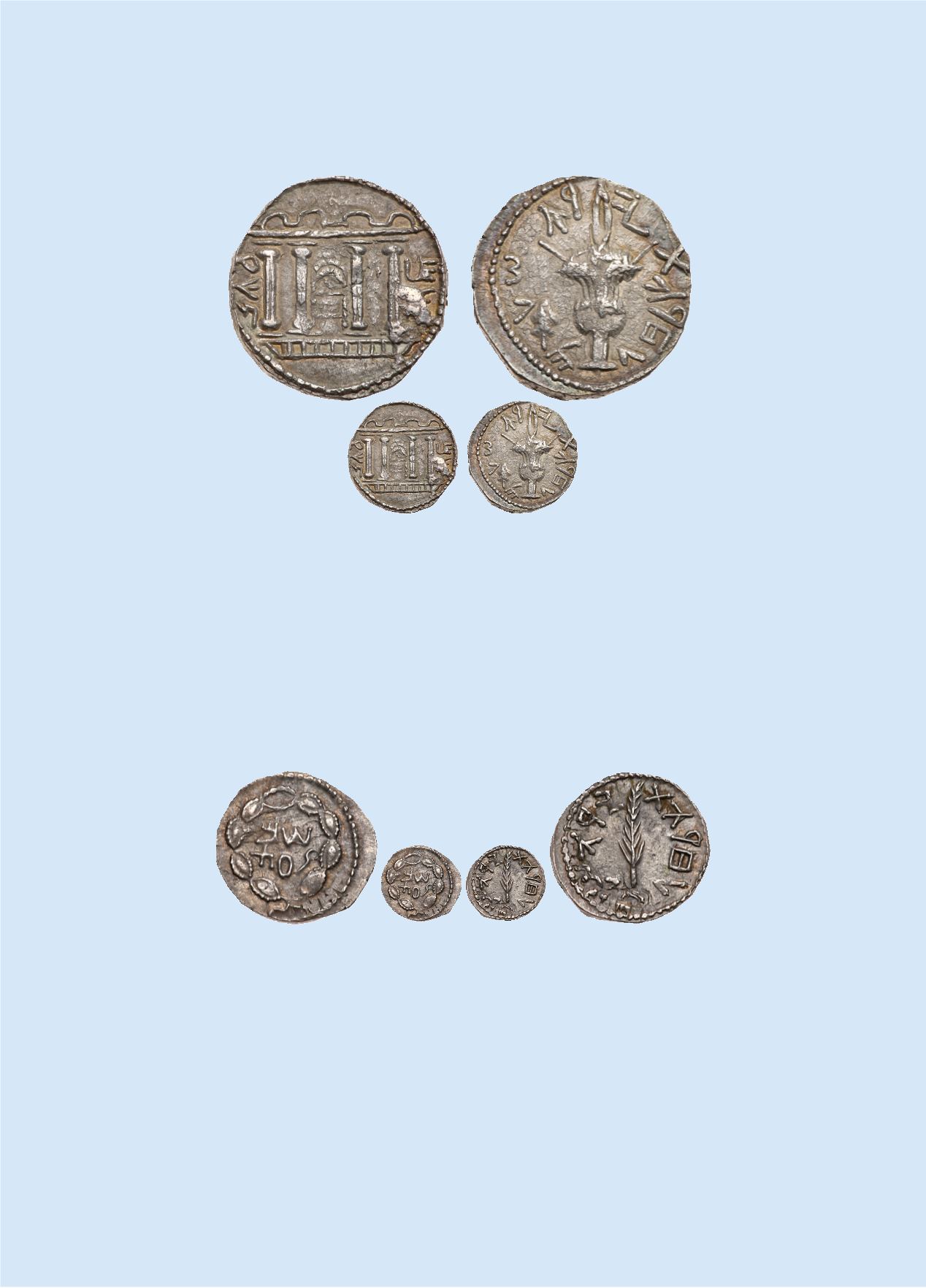

Very Rare H-1414 ‘Wavy Line” Variety Bar Kokhba Sela
153
Judaea, Bar Kokhba Revolt. Silver Sela (13.91 g), 132-135 CE. Undated, attributed to year 3 (134/5
CE). ‘Simon’ (Paleo-Hebrew), tetrastyle façade of the Temple of Jerusalem; show bread table or Ark of the
Covenant in chest form with semicircular lid and short legs, seen from a narrow side; above façade, wavy
line of four semicircles connected by horizontal lines. Rev. ‘For the freedom of Jerusalem’ (Paleo-Hebrew),
lulav with etrog at left. (Mildenberg 88.4 (O16/R68; this coin); TJC -; Hendin 1414).
Very rare type - only
seven specimens cited by Mildenberg.
Lightly toned. Choice very fine.
$ 6,000
Purchased privately from Josef Kaufman at the NYINC, December 1991
ex El Fawar Hoard.
This rare variety of the ‘Wavy Line’ above the facade of the Jerusalem Temple (M-88) consisting of four semi-cirles connected by a
horizontal line is the only die of this variety.
154
Judaea, Bar Kokhba Revolt. Silver Zuz (3.62 g), 132-135 CE. Undated, attributed to year 3 (134/5 CE).
‘Simon’ (Paleo-Hebrew) within wreath of thin branches wrapped around eight almonds, with a medallion
at top and tendrils at bottom. Rev. ‘For the freedom of Jerusalem’ (Paleo-Hebrew), upright palm branch.
(Mildenberg 63.11 (O14/R35; this coin); TJC 279c; Hendin 1416).
Only thirteen examples
cited by Mildenberg, this being the specimen selected to illustrate the dies.
Well struck and attractively toned.
Extremely fine.
$ 700
ex Abraham Bromberg Collection, part II (10 December 1992), lot 467.
ex El Fawar Hoard.
This coin is interesting in that the accompanying documentation has enlarged photographs of the obverse and reverse. On the
reverse can be seen a very faint outline, nearly a shadow, of the portrait of the undertype. At first appearance, it looks like Mark
Antony with his oft-depicted flattened nose. However, there also seems to be wreath ties at the back of the head, which if correct
would then suggest that the coin used as the planchet for this Bar Kochba zuz is an early (ca. A.D. 101/2) portrait of Trajan.



















